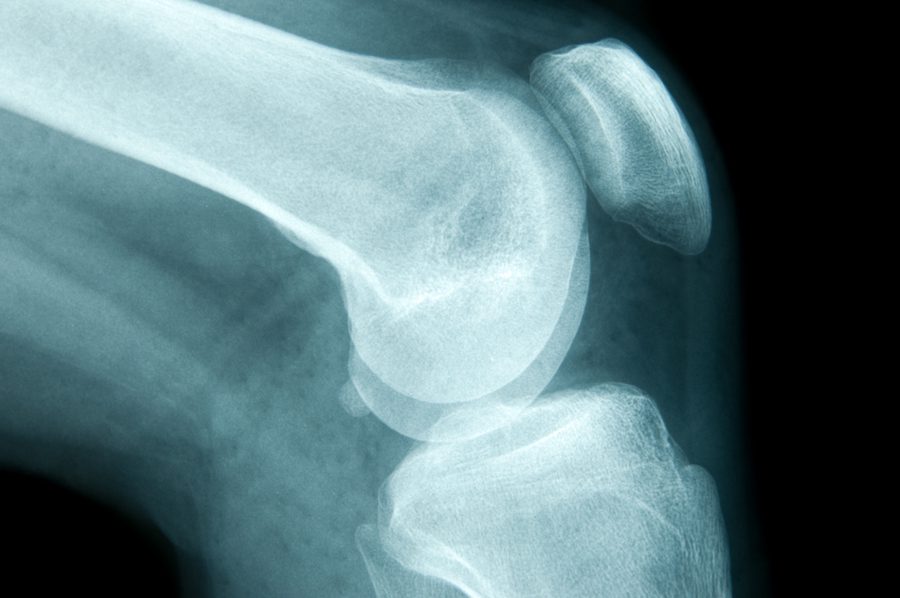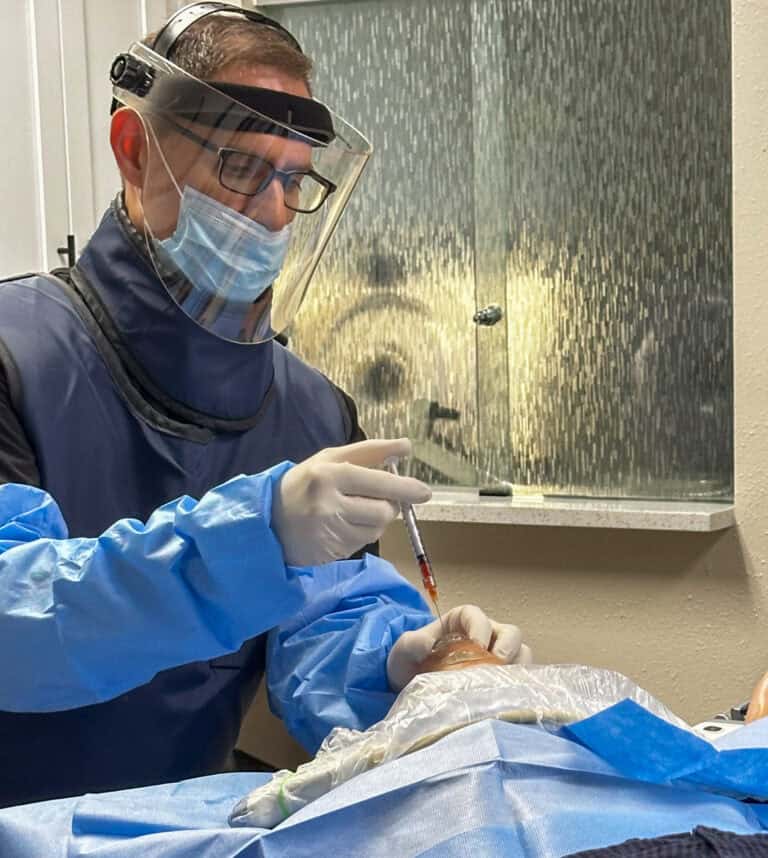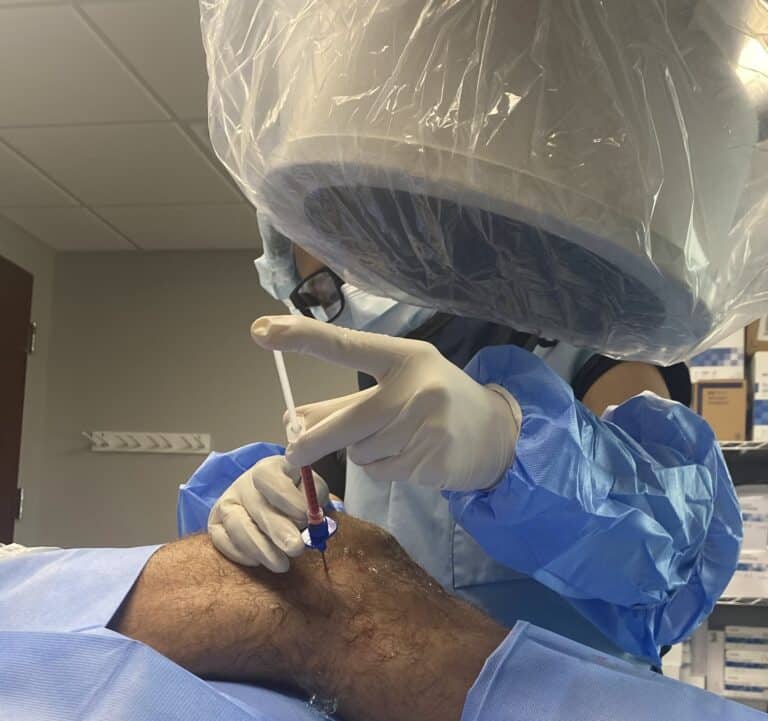Oftentimes, patients ask us what they can do to improve their joint cartilage and prevent arthritis. Cartilage is a connective tissue that acts as a cushion between the bones to protect our joints by absorbing shock.
The visual evidence of arthritis seen on imaging studies can be due to the decrease in quantity and quality of the cartilage, the decrease in joint space width, the formation of bone spurs, and degenerative changes in the bone underlying the cartilage. However, arthritis is not just a disease of wear and tear like you might think of a tire wearing away with more miles driven. There is a biologic component, that is, there are internal chemicals that promote or protect the wear and tear.
The Truth About Cartilage Loss
It is important to understand that cartilage, in of itself, does not actually have any nerve endings. And therefore, the cartilage loss is NOT the direct source of the pain. It is, however, the visual evidence that arthritis exists. That is, there are destructive substances in the joint that are breaking down the tissue. The cartilage, in a sense, is the victim of the arthritic disease.
You might be surprised to learn that people can have virtually no cartilage in a part of a joint (“bone on bone”) and have no pain at all. As a matter of fact, this is very common. We have patients who have completed Ironman triathlons without any cartilage in parts of their knee. And on the other hand, a person can have robust amounts of cartilage and have a tremendous amount of pain – again, this is very common as well. The point is that cartilage loss is a sign of arthritis and protecting your cartilage is a way of limiting the effects of the arthritic process.
What Causes Joint Pain?
There are a number of structures that do cause pain. The lining of the joint (synovial lining) is rich in nerve endings that sense pain. This lining is responsible for producing healthy fluid and lubricating substances. In diseases such as arthritis, the synovial lining can become bumpy and painful. It will also produce abnormal inflammatory fluid that act as solvents, breaking down tissue, on the other structures in the joint. The secret may be in the sauce, figuring out what’s in that fluid and how to control the synovial lining is one of the keys to halting arthritis.
Another source of pain in a joint is the bone underneath the cartilage. This bone is quite hardy and able to tolerate heavy loads often without any problems even when there isn’t any cartilage to protect it. But there are times when the bone in areas of decreased amounts of cartilage begins to breakdown and become swollen representing little micro-breaks in the framework of the bone. This can be painful (not always) and can only be seen on an MRI. These areas are called bone marrow lesions (BML’s).
Can We Re-grow Cartilage?
Getting cartilage to re-grow is an admirable goal and it may one day be possible to consistently do this, but it seems that it is actually more important to keep the synovial lining under control and to strengthen the bone under the cartilage so that it can withstand more pressure. It is also important to make sure that there is stability around the joint – that is, the ligaments, tendons, muscles, and nerves are healthy and functioning normally and in a balanced way.
Stem cells can help cartilage to regrow but it is inconsistent and minimal at this time (despite what you may have heard). They can, however, improve the quality of the remaining cartilage, the strength of the bone, reprogram the synovial lining so that it produces healthy protective chemicals instead of destructive ones, and strengthen the ligaments and tendons so that there is better stability around the joint. Using stem cells in this way requires working with a highly trained physician who performs the proper analysis and creates and executes a procedure to precisely inject the tissues that are in most need of improvement. Receiving a stem cell injection blindly into a joint by someone who dabbles in this approach is not the way to go. To understand why Regenexx is different, click here.
The key to understanding how to keep more cartilage as you age is to understand what actually causes cartilage loss. Let’s dig deeper and take a look at the most common causes of cartilage loss along with a few solutions to help prevent it.
1. Obesity (Mechanical)
Physics has taught us that being heavier places more wear-and-tear forces on our cartilage and therefore, arthritis. While obesity can affect any joint, our knee joints are particularly vulnerable to the effects of obesity. Being overweight greatly increases the load on knee joints by 2-4 times which can lead to pain and arthritis and increase the risk for knee replacement.
The solution? Although it can be tough to accomplish, losing weight is the ultimate solution. Even if there has been some damage to the joint, shedding a few pounds can improve the symptoms and slow the progression of arthritis.
2. Obesity (Biochemical)
Now that we have addressed the mechanical, or physical, effects of obesity on the body, biochemical addresses the chemical reactions to obesity in the body. Not only does obesity break down cartilage by wear and tear, but is also can cause changes in the patient’s insulin-response system that can break down cartilage. This is referred to as “metabolic syndrome,” which is defined by obesity, high blood pressure, and early diabetes. Metabolic syndrome dramatically destabilizes the chemical matrix structure of cartilage. Additionally, adipose (fat) tissue can overproduce a hormone called Leptin which is normally responsible for helping regulate a person’s sense of fullness but also impacts bone and cartilage. More leptin over time results in more arthritis.
The solution? We recommend reducing carbohydrate and sugar intake to minimize spikes in blood sugar and insulin release. If you have the genes that create this risk for metabolic syndrome, you may need a strict low-glycemic diet that eliminates sodas, added sugar, caffeine, fruit drinks, etc., and limits whole grains. Proper diet and nutrition need to be maintained. Certain supplements may turn out to be beneficial for obesity-related arthritis, such as reservatrol and also a combination of hyaluronic acid and other glycosaminoglycans called Oralvisc®.
3. Trauma
A sudden traumatic event, such as a sports injury, can injure the cartilage surface and potentially cause a weak spot in the cartilage. If weak spots are present, cartilage can break down faster with normal forces. While the damage may be small, cartilage will wear faster with weak spots.
The solution? There may be some benefit to taking an oral antioxidant known as N-acetyl cysteine (NAC) if you do suffer from a traumatic event. This may decrease the negative impact on the cartilage. Before the issue becomes bigger, look for regenerative medicine cell-based solutions for cartilage repair, such as platelet rich plasma (PRP) or stem cell injections.
4. Joint Instability
Injured ligaments (torn or stretched) can cause joints to move around too much and cause joint instability. All of this extra unnatural motion can slowly continue to injure the cartilage in the joint, eventually leading to arthritis. Soreness or swelling after activity may indicate instability. Additionally, if the instability is severe, you might experience sudden shifting, popping, or cracking. Joint instability is sometimes overlooked by physicians that are looking for injured ligaments.
The solution? Injections like prolotherapy, PRP, and stem cells in our clinical experience can help reduce instability whether the ligament is loose or torn (partial or nonretracted). Here is a great example of how stem cell injections improved the symptoms and MRI appearance of one patient’s torn anterior cruciate ligament (ACL), helping him avoid surgery. If the instability is more severe, you may need to have it surgically corrected.
5. Poor Nutrition
It is true what they say… you are what you eat. Poor dietary habits and lack of proper nutrition can cause major issues with not only your cartilage and your musculoskeletal system but your entire body. What you eat can turn on or off the genes in your body that protect your cartilage.
The solution? Education. It is essential to know what is and what is not good for you and your body. This free e-book can get you started. Introduce supplements into your diet to enhance cartilage health. Glucosamine and chondroitin have both been shown to preserve and protect cartilage as well as slowing the progression of arthritis. Vitamin C also has a protective effect. Additionally, Resveratrol and Vitamin E have been shown to protect and support cartilage cells.
6. Medications
Surprisingly, the most common medications that are injected into arthritic joints for relief are also likely the most toxic to cartilage. Local anesthetics and steroid medications can cause cartilage cell death called apoptosis. A common medication used to prolong the effects of anesthetics for injections called epinephrine is even more toxic due to its low pH level and the preservatives that prolong its shelf life.
It is also notable that commonly used NSAID medications, like ibuprofen (Motrin), naproxen (Aleve), and celecoxib, have been shown to have negative effects on cartilage cells. Chronic use of NSAIDs actually seems to double the progression of arthritis.
The solution? We recommend staying away from “cortisone shots,” NSAIDS, and other drugs when not essential. Prior to undergoing a procedure, make sure you do your research on what local anesthetics your doctor is using and how those may impact your cartilage and stem cells. Natural anti-inflammatories, like fish oil, glucosamine, chondroitin, and curcumin may not only help protect cartilage but can also relieve the pain and inflammation from arthritis as you age. Vitamin E can also protect against chemical insults from medication.
7. Lack of Exercise
Besides leading to many other health issues, lack of exercise can create problems with our joints. Joints are made for movement. Regular exercise along with utilizing the proper techniques for those exercises is essential. Regular exercise may keep your cartilage healthy. Running may actually have a protective effect on normal, healthy cartilage.
The solution? If you do have a lot of cartilage loss, you may want to switch from high-impact exercises to low-impact activities to protect your existing cartilage. If you have normal, healthy joints, keep running and exercising regularly, it is likely protective.
8. Poor Alignment and Biomechanics
If you have asymmetrical cartilage loss (loss of cartilage in one knee and not the other), you may have a body-alignment problem that is wearing down certain joints faster than others.
The solution? Working with a skilled physical therapist can help you get your muscles balanced and fine-tune your body so that it is biomechanically optimized. There really isn’t anything you can do on your own to strengthen loose or chronically torn ligaments. Fortunately, working with a skilled physician who can precisely target and inject prolotherapy, PRP, or stem cells into the ligaments can get them to heal and/or strengthen.
9. Aging and Genetics
Unfortunately, older patients seem to have less cartilage and some people simply have the genetic makeup for weaker cartilage.
The solution? While there isn’t much that we can do about our genes, we can actually influence the ways our genes are expressed through attention to healthy eating, exercise, limiting chronic exposure to environmental toxicants/chemicals, better sleep, and use of certain supplements, more love and laughter, and having a sense of purpose. Interestingly, injecting PRP or stem cells into an arthritic joint may protect and improve the health of the cartilage from the effects of aging for a period of time. This may turn out to be the best prevention strategy of all.
The key to protecting our cartilage as we get older is to understand how and why cartilage breaks down. Adhering to a healthy lifestyle and utilizing regenerative options like PRP and stem cells seems to be the best strategy to maintain healthy cartilage and to decrease the pain associated with arthritis.











